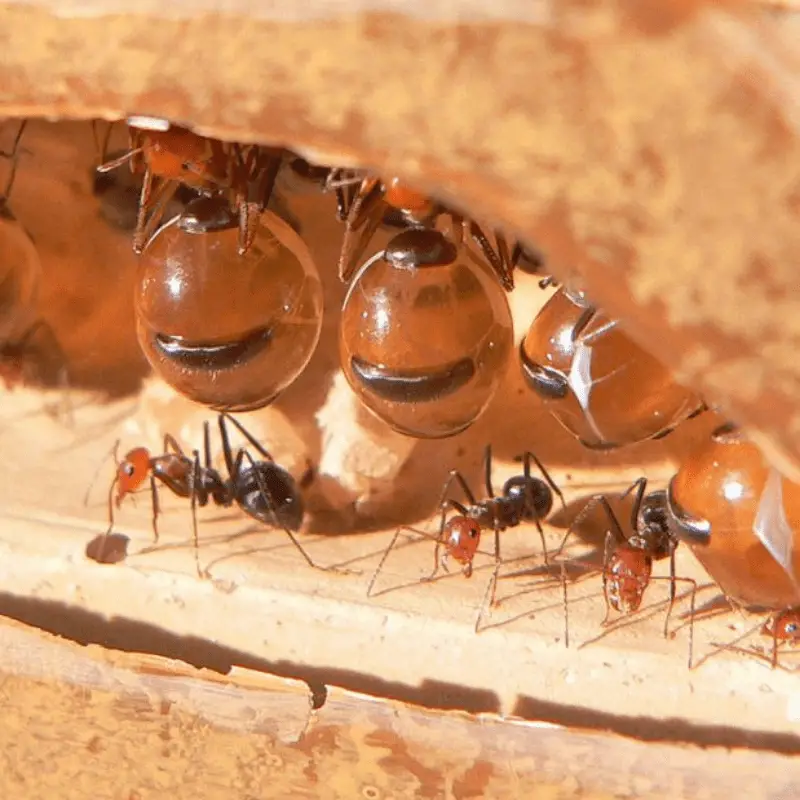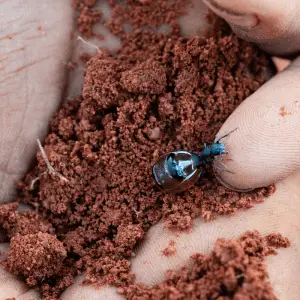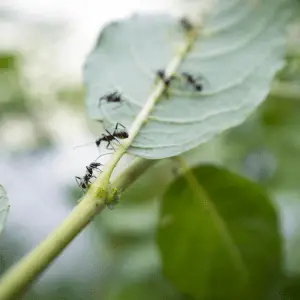Honeypot ants hang from the ceiling on the colony nest as food storage, ready to offer out to the rest of the ants. The workers bring food from outside to transport it into the honeypot ant’s abdomens.
Lifespan: up to 8 years
How do they feed each other?
To feed, they will stroke the honeypot ant’s antenna when hungry. The honeypot ant will then regurgitate the food into the hungry ant’s mouth. These honeypot ants can swell to a grape size and weigh a gram. They have two stomachs, one for the colony and one for themselves.
Specialised Workers
Each of the honeypot anta within a nest has a responsibility. Below are the main jobs available.
Worker Ants: Foraging for food outside to bring back to the storage honeypot ants.
If all the honeypot ants die or leave the nest, the worker ants can become honeypot ants. However, adjusting and storing the liquid food can take some time.
Honeypot Storage Ants: Their job is to store the workers’ food in their abdomens for the rest of the colony. They had it hard to get about as they were so big, so they generally hung around waiting to play their part to a hungry ant.
Soldier Ants: Look after the colony and protect it from predators.
Gatekeepers: Usually, the older ants or the sick ants, as these ants tend to die doing their job, much like a suicide mission.
Nest Cleaner: Cleans the colony by dragging out crumbs, leaves and other unwanted items in the nest.
Nurse and Nanny: These ants look after the baby ants and the queen ant
Nest Location
The best location for a colony of honeypot ants is deep underground. This keeps them away from predators and keeps the food stored in the honeypot ants fresh.
Conclusion
The honeypot ants have a vital role whilst hanging from the ceiling, and now we know why. They are the primary food source for the whole colony which relies on them to release food. The deeper down the nest, the more protection they have from predators and the fresher the food.



